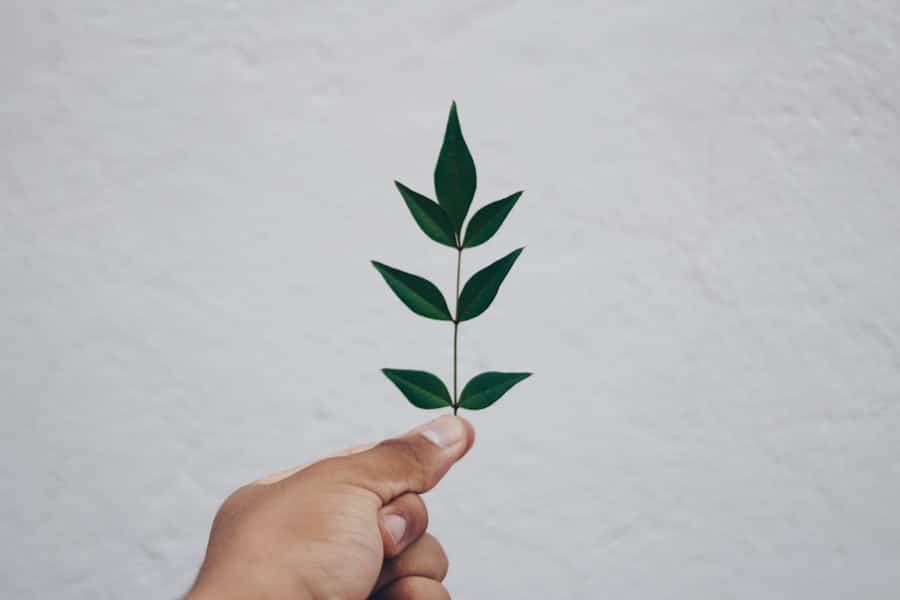Precision agriculture represents a transformative approach to farming that leverages technology to enhance productivity, efficiency, and sustainability. This methodology relies on data-driven decision-making, utilizing various tools and technologies to monitor and manage agricultural practices with unprecedented accuracy. Among these tools, drones have emerged as a pivotal component, revolutionizing the way farmers collect data and interact with their crops.
By integrating aerial imagery and real-time data analysis, drones facilitate a deeper understanding of crop health, soil conditions, and environmental factors, ultimately leading to more informed agricultural practices. The advent of drone technology in agriculture has coincided with the growing need for sustainable farming practices. As global populations rise and climate change poses new challenges, farmers are under increasing pressure to produce more food while minimizing environmental impact.
Drones offer a solution by enabling precise applications of inputs such as fertilizers and pesticides, reducing waste and promoting responsible resource management. This synergy between precision agriculture and drone technology not only enhances crop yields but also supports the overarching goal of sustainable farming.
Key Takeaways
- Precision agriculture utilizes drones for efficient crop monitoring and management.
- Drones play a crucial role in soil mapping and irrigation management for sustainable farming practices.
- The use of drones in precision agriculture offers advantages such as cost-effectiveness and time efficiency.
- Drones are also valuable for pest and disease control in agriculture, contributing to sustainable farming practices.
- The future of drones in precision agriculture holds potential for further advancements in sustainable and efficient farming practices.
The Role of Drones in Crop Monitoring and Management
Drones play a crucial role in crop monitoring by providing farmers with high-resolution aerial imagery that captures detailed information about crop health and growth patterns. Equipped with advanced sensors, drones can collect multispectral and thermal images that reveal variations in plant health, moisture levels, and nutrient deficiencies. This data allows farmers to identify problem areas within their fields that may require targeted interventions, such as additional irrigation or fertilization.
For instance, a farmer can use drone imagery to detect areas of stress in crops that may not be visible from the ground, enabling timely action to mitigate potential yield losses. Moreover, drones facilitate continuous monitoring throughout the growing season, allowing farmers to track changes in crop health over time. This capability is particularly valuable during critical growth stages when timely interventions can significantly impact yield outcomes.
By employing drones for regular monitoring, farmers can establish baseline data for their fields, enabling them to make comparisons and assess the effectiveness of their management practices. This ongoing assessment fosters a proactive approach to crop management, where decisions are based on real-time data rather than historical assumptions.
Advantages of Using Drones for Precision Agriculture

The advantages of utilizing drones in precision agriculture are manifold, beginning with their ability to cover large areas quickly and efficiently. Traditional methods of crop monitoring often involve labor-intensive ground surveys that can be time-consuming and costly. In contrast, drones can survey hundreds of acres in a fraction of the time, providing comprehensive data that would be impractical to gather through conventional means.
This efficiency not only saves time but also reduces labor costs, allowing farmers to allocate resources more effectively. Additionally, drones enhance the accuracy of data collection by minimizing human error. The use of automated flight paths and advanced imaging technology ensures that the data captured is consistent and reliable.
This precision is critical for making informed decisions regarding crop management practices. For example, when assessing soil health or identifying pest infestations, accurate data is essential for determining the appropriate course of action. Drones provide a level of detail that empowers farmers to make decisions based on empirical evidence rather than guesswork.
Drones and Soil Mapping for Sustainable Farming
Soil mapping is another area where drones have made significant contributions to sustainable farming practices.
This data is invaluable for farmers seeking to optimize their soil management strategies.
For instance, understanding the spatial variability of soil properties allows farmers to implement variable rate applications of fertilizers and amendments, ensuring that each part of the field receives the appropriate amount of nutrients. Furthermore, drone-assisted soil mapping supports sustainable practices by promoting soil conservation and reducing environmental impact. By applying inputs more precisely based on soil needs, farmers can minimize runoff and leaching into nearby water bodies, thereby protecting local ecosystems.
Additionally, this targeted approach helps maintain soil health over time by preventing over-application of fertilizers that can lead to soil degradation. As a result, drones not only enhance productivity but also contribute to the long-term sustainability of agricultural systems.
Drones and Irrigation Management for Water Conservation
Water management is a critical aspect of modern agriculture, particularly in regions facing water scarcity. Drones play an essential role in irrigation management by providing insights into soil moisture levels and crop water requirements. Equipped with thermal imaging sensors, drones can detect variations in temperature that indicate differences in moisture content within the soil.
This information enables farmers to make informed decisions about irrigation scheduling and water application rates. By utilizing drone technology for irrigation management, farmers can implement precision irrigation techniques that conserve water while ensuring optimal crop growth. For example, instead of applying uniform irrigation across an entire field, farmers can use drone data to identify areas that require more or less water based on actual moisture levels.
This targeted approach not only conserves water resources but also promotes healthier crops by preventing overwatering or underwatering. As water scarcity becomes an increasingly pressing issue globally, the role of drones in efficient irrigation management will become even more critical.
Precision Agriculture and Drones for Pest and Disease Control

The integration of drones into pest and disease control strategies represents another significant advancement in precision agriculture. Drones equipped with multispectral cameras can detect early signs of pest infestations or disease outbreaks by analyzing changes in plant color and health indicators. This early detection allows farmers to respond swiftly before infestations escalate into larger problems that could threaten entire crops.
Moreover, drones facilitate targeted pesticide applications by enabling farmers to apply treatments only where they are needed rather than across entire fields. This precision reduces the overall amount of chemicals used, minimizing environmental impact while still effectively managing pest populations. For instance, if a drone identifies a localized area with a pest problem, farmers can apply pesticides specifically to that zone rather than treating the entire field unnecessarily.
This approach not only conserves resources but also aligns with integrated pest management practices that prioritize ecological balance.
The Future of Drones in Precision Agriculture
As technology continues to evolve, the future of drones in precision agriculture looks promising. Innovations such as artificial intelligence (AI) and machine learning are set to enhance the capabilities of drone systems further. For example, AI algorithms can analyze vast amounts of data collected by drones to identify patterns and predict future crop performance based on historical trends.
This predictive analytics capability will empower farmers to make proactive decisions that optimize yields while minimizing risks associated with climate variability. Additionally, advancements in drone hardware are likely to improve flight times, payload capacities, and sensor technologies. As battery life extends and sensors become more sophisticated, drones will be able to cover larger areas with greater detail and accuracy.
The integration of autonomous systems will also streamline operations, allowing drones to operate independently while collecting data or applying inputs without direct human intervention.
The Impact of Drones on Sustainable Agriculture
The impact of drones on sustainable agriculture is profound and multifaceted. By enhancing crop monitoring, improving soil mapping, optimizing irrigation management, and facilitating targeted pest control, drones contribute significantly to the efficiency and sustainability of farming practices.
Incorporating drones into precision agriculture not only enhances productivity but also aligns with broader goals of sustainability by reducing waste and minimizing environmental impact. As farmers continue to embrace these technologies, the potential for innovation in agricultural practices will expand, paving the way for a more resilient and sustainable future in food production. The ongoing evolution of drone technology promises exciting developments that will further transform the landscape of agriculture in the years to come.
Drones are revolutionizing precision agriculture by providing farmers with advanced tools to monitor crop health, optimize resource use, and enhance sustainability practices. For those interested in exploring how technology is shaping various industries, a related article on the impact of AI in creative fields can be found here: Discover the Best AI Video Generator Software Today. This article highlights the intersection of technology and innovation, much like how drones are transforming agricultural practices.
FAQs
What is precision agriculture?
Precision agriculture is a farming management concept that uses technology to optimize crop yields and reduce waste. It involves the use of data, such as GPS, sensors, and drones, to make informed decisions about crop management.
How do drones enhance precision agriculture?
Drones are equipped with various sensors and cameras that can collect data on crop health, soil conditions, and irrigation needs. This data can then be used to create detailed maps and make targeted interventions, such as applying fertilizers or pesticides only where they are needed.
What are the benefits of using drones in precision agriculture?
Using drones in precision agriculture can lead to increased crop yields, reduced use of resources such as water and fertilizers, and lower environmental impact. Drones can also help farmers save time and money by providing real-time data and enabling more efficient decision-making.
Are there any challenges to using drones in precision agriculture?
Some challenges to using drones in precision agriculture include the initial cost of the technology, the need for specialized training to operate drones, and regulatory restrictions on drone use in certain areas. Additionally, data management and analysis can be complex and require specific expertise.

